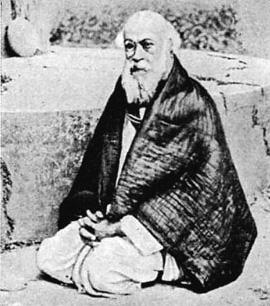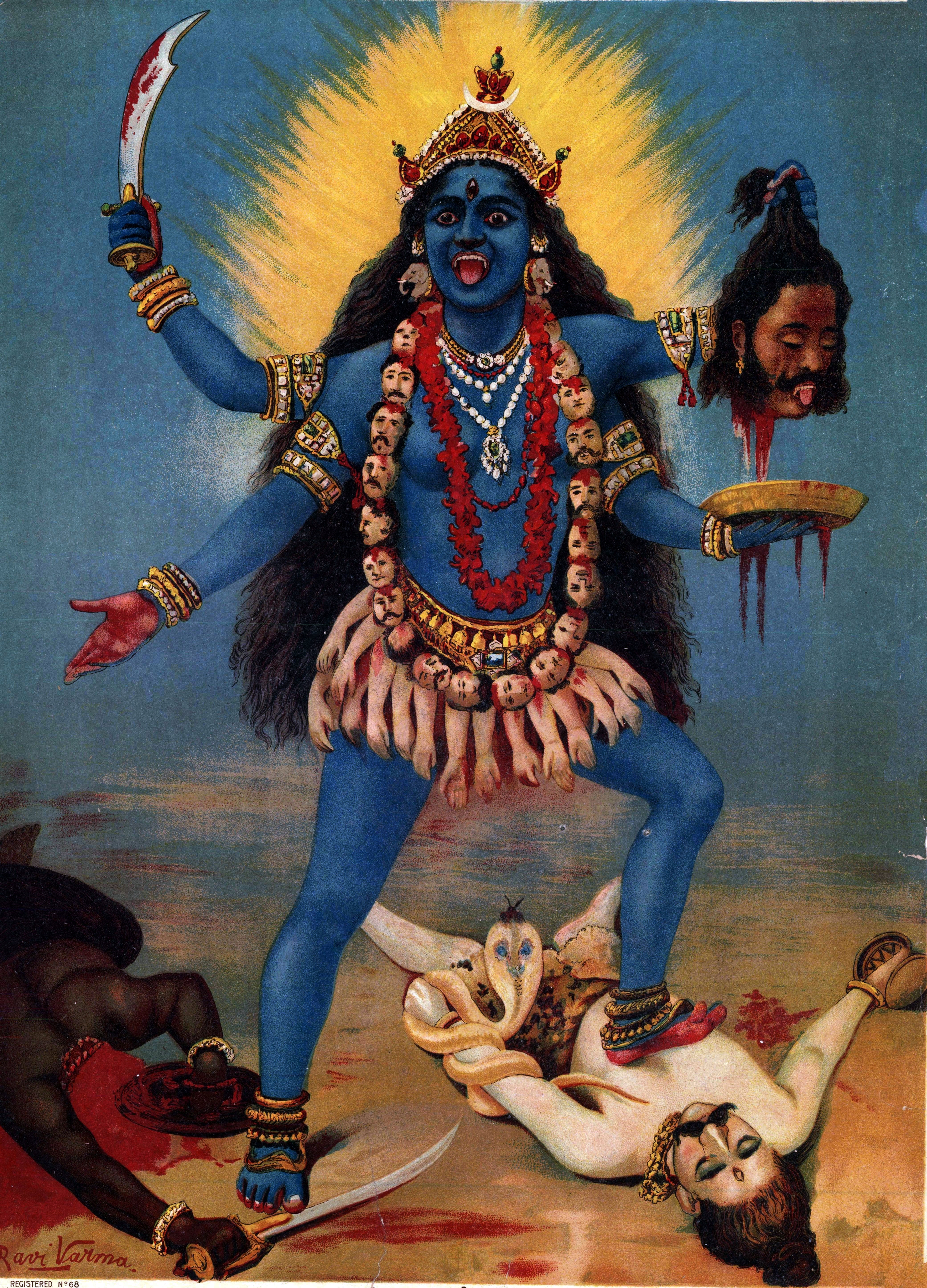|
Sri Sri Ramakrishna Kathamrita
''Sri Sri Ramakrishna Kathamrita'' ( bn, শ্রীশ্রীরামকৃষ্ণ-কথামৃত, , ''The Nectar of Sri Ramakrishna's Words'') is a Bengali literature, Bengali five-volume work by Mahendranath Gupta (1854–1932) which recounts conversations and activities of the 19th century Indian mystic Ramakrishna, and published consecutively in years 1902, 1904, 1908, 1910 and 1932. The ''Kathamrita'' is regarded as a Bengali classic and revered among the followers as a sacred scripture. Its expurgated translation into English is entitled ''The Gospel of Sri Ramakrishna'' (1942). Methodology and history Mahendranath Gupta (famously known simply as "M.") was a professor at Surendranath College, Ripon College and taught at a number of schools in Kolkata. He had an academic career at Hare School and Presidency University, Kolkata, Presidency College in Kolkata. M had the habit of maintaining a personal diary since the age of thirteen. M met Ramakrishna in 1882 and ... [...More Info...] [...Related Items...] OR: [Wikipedia] [Google] [Baidu] |
Mahendranath Gupta
Mahendranath Gupta ( bn, মহেন্দ্রনাথ গুপ্ত) (14 July 1854 – 4 June 1932), (also famously known as শ্রীম, Master Mahashay, and M.), was a disciple of Ramakrishna (a great 19th-century Hindu mystic) and a great mystic himself. He was the author of '' Sri Sri Ramakrishna Kathamrita'' (5 vols.), a Bengali classic; in English, it is known as ''The Gospel of Sri Ramakrishna.'' He was also an early teacher to Paramahansa Yogananda, a famous 20th-century yogi, guru and philosopher. In his autobiography, Yogananda noted that Gupta ran a small boys' high school in Kolkata, and he recounted their visits, as they often traveled to the Dakshineshwar Kali Temple together. Having a devotional nature, Gupta worshipped the Divine Mother in the form of Kali, and often reflected the wisdom of his guru Ramakrishna in his daily life and mannerisms. Yogananda reverentially regarded Gupta's spirituality, calling him an "Incarnation of purity" and "the greates ... [...More Info...] [...Related Items...] OR: [Wikipedia] [Google] [Baidu] |
Udbodhan
''Udbodhan'' is the only Bengali publication of the Ramakrishna Math and Ramakrishna Mission, started by Vivekananda in January 1899, with Trigunatitananda as its founding editor Over the years, it also grew into a publishing house, and remained one of the leading publishers of literature of Ramakrishna and Vivekananda. Library facilities, reading and lending books are available at Udbodhan office. The collection varies from history, culture, the Vedas, the Upanishads to adventures. History Before the publication of ''Udbodhan'', the ''Brahmavadin'' and ''Prabuddha Bharata'' were being published from Madras under Vivekananda's inspiration, but these were not the official journals of the Ramakrishna Order. It was only later that the ''Prabuddha Bharata'' was taken over by Ramakrishna Mission and published first from Almora, then from Mayavati, and now from Kolkata. The construction of the present building was started by Saradananda, the then editor, in 1907, subsequently, t ... [...More Info...] [...Related Items...] OR: [Wikipedia] [Google] [Baidu] |
Culturally Sensitive
Cultural sensitivity, also referred to as cross-cultural sensitivity or cultural awareness, is the knowledge, awareness, and acceptance of other cultures and others' cultural identities. It is related to cultural competence (the skills needed for effective communication with people of other cultures, which includes cross-cultural competence), and is sometimes regarded as the precursor to the achievement of cultural competence, but is a more commonly used term. On the individual level, cultural sensitivity is a state of mind regarding interactions with those different from oneself. Cultural sensitivity enables travelers, workers, and others to successfully navigate interactions with a culture other than their own. Cultural diversity includes demographic factors (such as race, gender, and age) as well as values and cultural norms. Cultural sensitivity counters ethnocentrism, and involves intercultural communication, among relative skills. Most countries' populations include minori ... [...More Info...] [...Related Items...] OR: [Wikipedia] [Google] [Baidu] |
Lex Hixon
Lex Hixon (1941–1995) (born Alexander Paul Hixon Junior, also known as Nur al-Anwar al-Jerrahi in the Sufi community) was an American Sufi author, poet, and spiritual teacher. He practiced and held membership in several religious traditions. He believed that all religions are true, which was sparked by his study of the life and teachings of Ramakrishna. Life and education Hixon was born on December 25, 1941, in Pasadena, California, one of three sons of Alexander and Adelaide Hixon. He married his second wife, Sheila, in 1965; they had two daughters Shanti, India, and one son, Dylan. Hixon also had a daughter, Alexandra, from a previous marriage to Margaret Taylor. He graduated from Yale University in 1963, where he majored in philosophy, and he received a PhD in comparative religion from Columbia University in 1976. His doctoral thesis was on the Gaudapada Karika, a Sanskrit scripture of the very early Advaita Vedanta school of Hindu philosophy. Early spiritual training Hixo ... [...More Info...] [...Related Items...] OR: [Wikipedia] [Google] [Baidu] |
Jeffrey Kripal
Jeffrey John Kripal (born 1962) is an American college professor. He is the J. Newton Rayzor Chair in Philosophy and Religious Thought at Rice University in Houston, Texas. His work includes the study of comparative erotics and ethics in mystical literature, American countercultural translations of Asian religions, and the history of Western esotericism from gnosticism to New Age religions. Scholarly Impact ''Kali's Child'' Kripal's 1995 book ''Kali's Child: The Mystical and the Erotic in the Life and Teachings of Ramakrishna'' was a study of the Bengali mystic Ramakrishna. The book was a psychoanalytic study arguing that Ramakrishna's mystical experiences involved a strong homoerotic dimension. The book won the American Academy of Religion's History of Religions Prize for the Best First Book of 1995. A second, revised edition was published in 1998. The book has been dogged by controversy ever since its initial publication in 1995. The book's claims have been questioned ... [...More Info...] [...Related Items...] OR: [Wikipedia] [Google] [Baidu] |
Swami Nikhilananda
Swami Nikhilananda (1895–1973), born Dinesh Chandra Das Gupta was a direct disciple of Sri Sarada Devi. In 1933, he founded the Ramakrishna-Vivekananda Center of New York, a branch of Ramakrishna Mission, and remained its head until his death in 1973. An accomplished writer and thinker, Nikhilananda's greatest contribution was the translation of '' Sri Sri Ramakrishna Kathamrita'' from Bengali into English, published under the title ''The Gospel of Sri Ramakrishna'' (1942). Biography Swami Nikhilananda was born in 1895 in Durgapur village, Sylhet district, in present-day Bangladesh (British India), and had his education in the University of Calcutta. As a graduate, he chose the profession of journalism. He then joined the Indian freedom movement and was incarcerated for a period in a British prison camp. As a boy, through his pious parents, he became acquainted with the teachings of Ramakrishna and Swami Vivekananda. These teachings made an indelible impression on his you ... [...More Info...] [...Related Items...] OR: [Wikipedia] [Google] [Baidu] |
Shakta
Shaktism ( sa, शाक्त, , ) is one of several major Hindu denominations, wherein the metaphysical reality is considered metaphorically a woman and Shakti (Mahadevi) is regarded as the supreme godhead. It includes many goddesses, all considered aspects of the same supreme goddess. Shaktism has different sub-traditions, ranging from those focused on most worshipped Durga, gracious Parvati to that of fierce Kali. The Sruti and Smriti texts of Hinduism are an important historical framework of the Shaktism tradition. In addition, it reveres the texts ''Devi Mahatmya'', the ''Devi-Bhagavata Purana'', ''Kalika Purana'' and Shakta Upanishads such as the Devi Upanishad. The ''Devi Mahatmya'' in particular, is considered in Shaktism to be as important as the ''Bhagavad Gita''. Shaktism is known for its various sub-traditions of tantra, as well as a galaxy of goddesses with respective systems. It consists of the Vidyapitha and Kulamārga. The pantheon of goddesses in Shaktism ... [...More Info...] [...Related Items...] OR: [Wikipedia] [Google] [Baidu] |
Ramprasad Sen
( bn, রামপ্রসাদ সেন; c. 1718 or c. 1723 – c. 1775) was a Hindu Shakta poet and saint of eighteenth century Bengal. His '' bhakti'' poems, known as Ramprasadi, are still popular in Bengal—they are usually addressed to the Hindu goddess Kali and written in Bengali., p. 162 Stories of Ramprasad's life typically include legends and myths mixed with biographical details. It is said that, Ramprasad was born into a Bengali Baidya family, and showed an inclination towards poetry from an early age. He was highly influenced by Krishnananda Agamavagisha, a Tantric scholar and yogi. Ramprasad became well known for his devotional songs. His life has been the subject of many stories depicting his devotion to, and relationship with, Kali. Ramprasad's literary works include ''Vidyasundar'', ''Kali-kirtana'', ''Krishna-kirtana'' and ''Shaktigiti''. Ramprasad is credited with creating a new compositional form that combined the Bengali folk style of Baul mus ... [...More Info...] [...Related Items...] OR: [Wikipedia] [Google] [Baidu] |
Dakshineswar Kali Temple
Dakshineswar Kali Temple is a Hindu navaratna temple in Dakshineswar, Kolkata, West Bengal, India. Situated on the eastern bank of the Hooghly River, the presiding deity of the temple is Bhavatarini, a form of Parashakti Adya Kali, otherwise known as Adishakti Kalika. And also it is a price full place p.11. The temple was built in 1855 by Rani Rashmoni, a Zamindar, philanthropist and a devotee of Kali. The temple is known for its association with Ramakrishna and Ma Sarada Devi, mystics of 19th century Bengal. The main temple was inspired by Navaratna style Radhakanta temple, built by Babu Ramnath Mondal of Tollygunge. The temple compound, apart from the nine-spired main temple, contains a large courtyard surrounding the temple, with rooms along the boundary walls. There are twelve shrines dedicated to Shiva—Kali's consort—along the riverfront, a temple to Radha-Krishna, a bathing ghat on the river, a shrine dedicated to Rani Rashmoni. 'Nahabat', the chamber in the nor ... [...More Info...] [...Related Items...] OR: [Wikipedia] [Google] [Baidu] |
Ramakrishna Order
The Ramakrishna Order (Bengali: রামকৃষ্ণ সংঘ) is the monastic lineage that was founded by Sri Ramakrishna, when he gave the ochre cloth of renunciation to twelve of his close disciples, in January 1886 at the Cossipore House.Ramakrishna and His Disciples, Christopher Isherwood, page 292 The Ramakrishna Order should not be confused with the Ramakrishna Math, which is the legal entity that trains young monks and directs the spiritual duties of the Swamis of the Order. There is also a parallel organization, the Ramakrishna Mission, which performs the charitable work including, orphanages, hospitals, clinics, primary schools, high schools, colleges, and universities - as well as disaster relief and economic development in villages. Information The Ramakrishna Order is the monastic lineage that gave birth to the twin organizations Ramakrishna Math and Ramakrishna Mission, both headquartered at Belur Math near Kolkata, India. The organizations were inspired by ... [...More Info...] [...Related Items...] OR: [Wikipedia] [Google] [Baidu] |
Tyagananda
Swami Tyagananda is a Hindu monk of the Ramakrishna Order and presently the head of the Vedanta Society in Boston. Currently, he is also the Hindu chaplain at MIT and Harvard. He has presented papers at academic conferences, and he gives lectures and classes at the Vedanta Society, MIT, Harvard, and other colleges in and around Boston. Biography He joined the Ramakrishna Order as a monk in 1976, after graduating from the University of Bombay, India. Swami Tyagananda has served in the following monasteries: * Mumbai 1976-1980 * Belur Math 1980-1982 * Ramakrishna Mission, Delhi 1982-1983 * Chennai 1983-1997 * Boston since 1998 Swami Tyagananda was the editor of the English language journal Vedanta Kesari based in Chennai, India. For eleven years. He has translated and edited ten books, including ''Monasticism: Ideals and Traditions'' (1991), ''Values: The Key to a Meaningful Life'' (1996) and ''The Essence of the Gita'' (2000). Swami Tyagananda also wrote the paper ''Kali ... [...More Info...] [...Related Items...] OR: [Wikipedia] [Google] [Baidu] |






